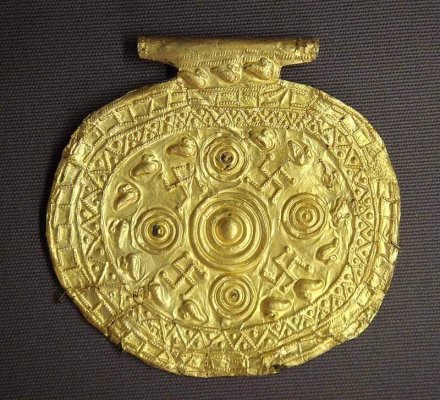- Joined
- Aug 18, 2002
- Messages
- 19,407
Given the furore over Harry the Nazi and a possible banning of the symbol:
www.forteantimes.com/forum/viewtopic.php?t=19873
it seems worth having a thread dedicated to this:
www.forteantimes.com/forum/viewtopic.php?t=19873
it seems worth having a thread dedicated to this:
Origins of the swastika
The EU has been urged to ban the swastika because of its Nazi associations with hate and racism. But the symbol was around long before Adolf Hitler.
The swastika is a cross with its arms bent at right angles to either the right or left. In geometric terms, it is known as an irregular icosagon or 20-sided polygon.
The word is derived from the Sanskrit "svastika" and means "good to be". In Indo-European culture it was a mark made on people or objects to give them good luck.
It has been around for thousands of years, particularly as a Hindu symbol in the holy texts, to mean luck, Brahma or samsara (rebirth). It can be clockwise or anti-clockwise and the way it points in all four directions suggests stability. Sometimes it features a dot between each arm.
Nowadays it is commonly seen in Indian artwork and current and ancient Hindu architecture, and in the ruins of the ancient city of Troy. It has also been used in Buddhism and Jainism, plus other Asian, European and Native American cultures.
The British author Rudyard Kipling, who was strongly influenced by Indian culture, had a swastika on the dust jackets of all his books until the rise of Nazism made this inappropriate. It was also a symbol used by the scouts in Britain, although it was taken off Robert Baden-Powell's 1922 Medal of Merit after complaints in the 1930s.
The Finnish Air Force also used it as its official symbol in World War II, and it still appears on medals, but it had no connection with the Nazi use.
It is rarely seen on its own in Western architecture, but a design of interlocking swastikas is part of the design of the floor of the cathedral of Amiens, France.
Nazi's hooked cross s
Swastika is also a small mining town in northern Ontario, Canada, about 580 kilometres north of Toronto. Attempts by the government of Ontario to change the town's name during World War II were rejected by residents.
But it is its association with the National Socialist German Workers Party in the 1930s which is etched on the minds of Western society. Before Hitler, it was used in about 1870 by the Austrian Pan-German followers of Schoenerer, an Austrian anti-Semitic politician.
Its Nazi use was linked to the belief in the Aryan cultural descent of the German people. They considered the early Aryans of India to be the prototypical white invaders and hijacked the sign as a symbol of the Aryan master race.
The Nazi party formally adopted the swastika - what they called the Hakenkreuz, the hooked cross - in 1920. This was used on the party's flag (above), badge, and armband.
In Mein Kampf, Adolf Hitler wrote: "I myself, meanwhile, after innumerable attempts, had laid down a final form; a flag with a red background, a white disk, and a black swastika in the middle. After long trials I also found a definite proportion between the size of the flag and the size of the white disk, as well as the shape and thickness of the swastika."
---------------------
Story from BBC NEWS:
http://news.bbc.co.uk/go/pr/fr/-/2/hi/u ... 183467.stm
Published: 2005/01/18 10:44:42 GMT
© BBC MMV


